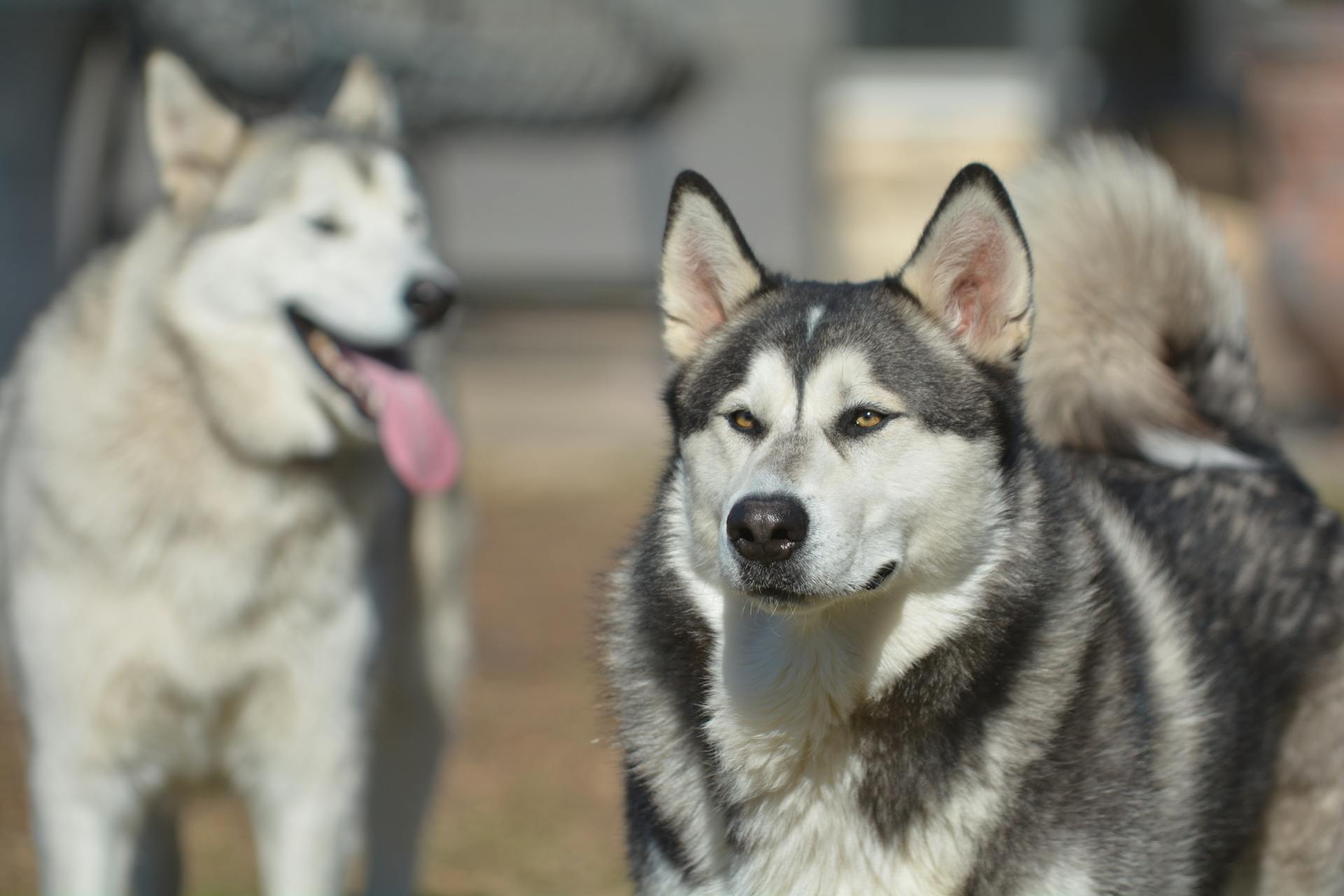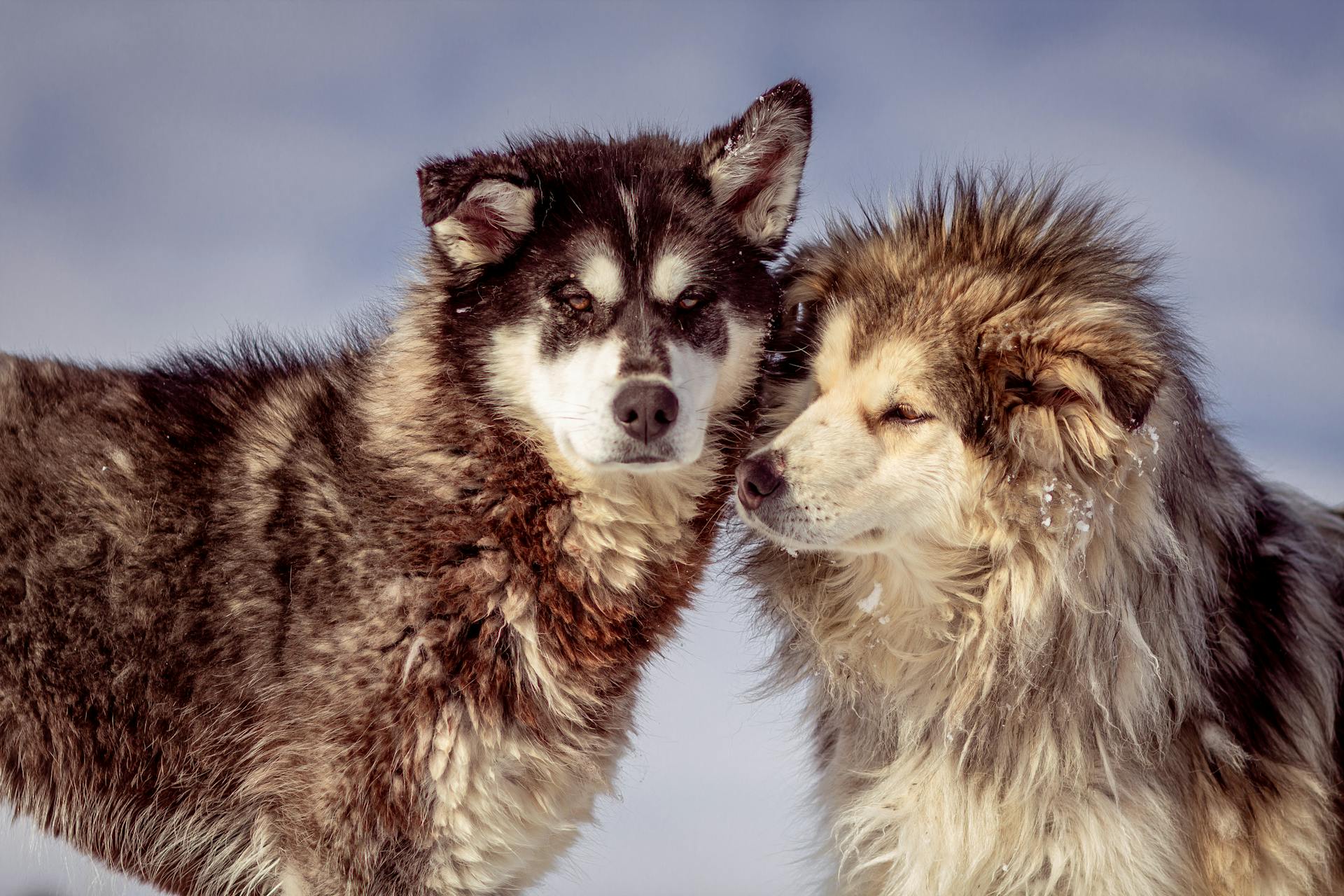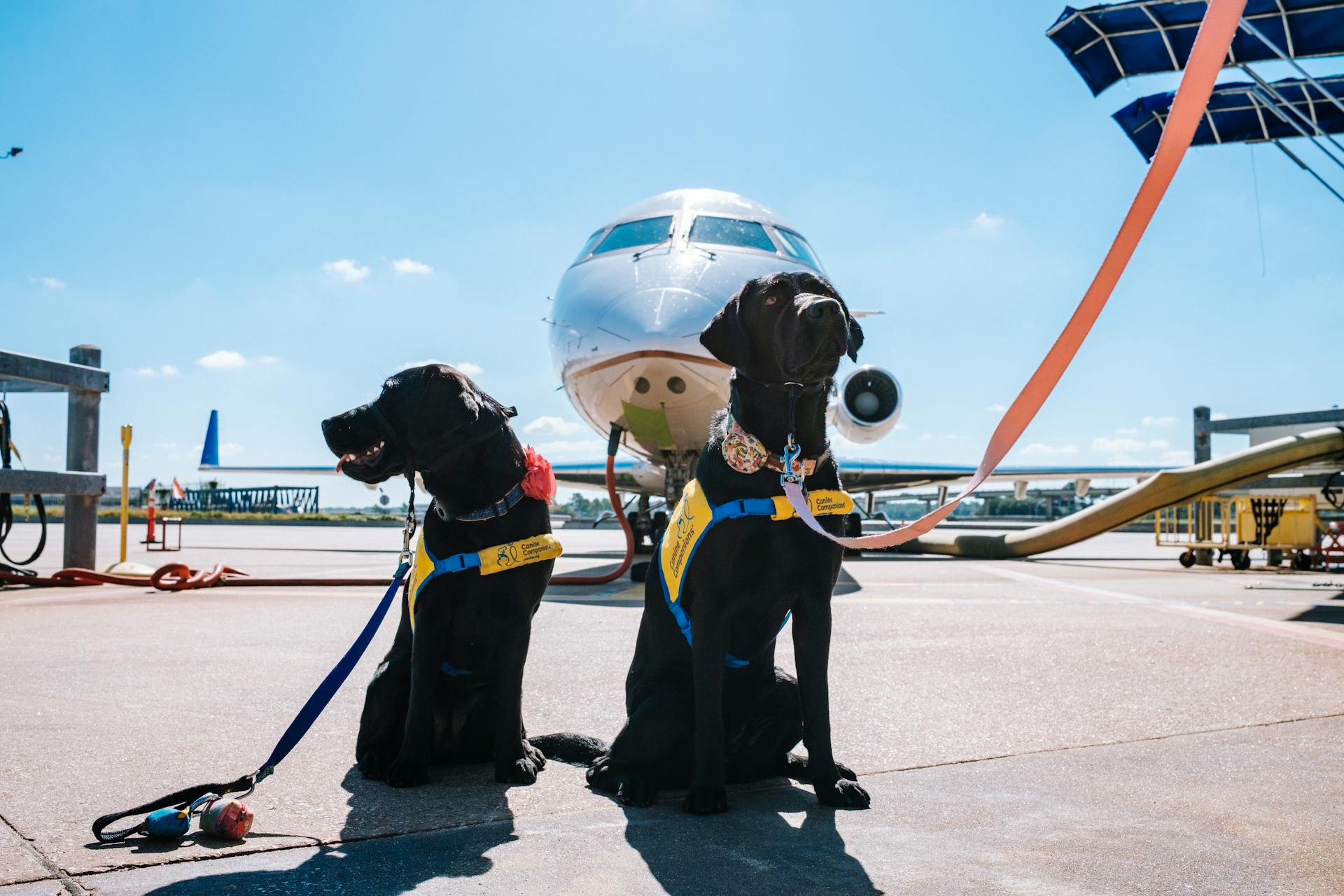
Service dogs are incredible animals that provide invaluable support to individuals with disabilities, and Alaska is no exception. In Alaska, service dogs are recognized as working animals under the state's disability laws.
To qualify for a service dog in Alaska, individuals must have a disability that substantially limits one or more major life activities. This can include physical disabilities, mental health conditions, and sensory impairments.
Alaska has a number of service dog training programs that provide training and certification for service dogs and their handlers. These programs often include obedience training, public access training, and task-specific training.
Service dogs in Alaska are allowed to accompany their handlers in all public places, including restaurants, stores, and public transportation.
Readers also liked: Alaskan Breeds of Dogs
Service Dogs in Alaska
Service dogs in Alaska are trained to navigate challenging weather conditions, including heavy snowfall and subzero temperatures. They wear special coats and boots to protect themselves from the elements.
These dogs are often used by people with disabilities who need assistance with daily tasks, such as walking or opening doors. In Alaska, service dogs are highly valued for their ability to provide support in harsh environments.
To qualify as a service dog in Alaska, the dog must be trained to perform specific tasks that assist its handler. This training typically begins at a young age and continues throughout the dog's life.
On a similar theme: Dog Sledding in Anchorage Alaska
Definition
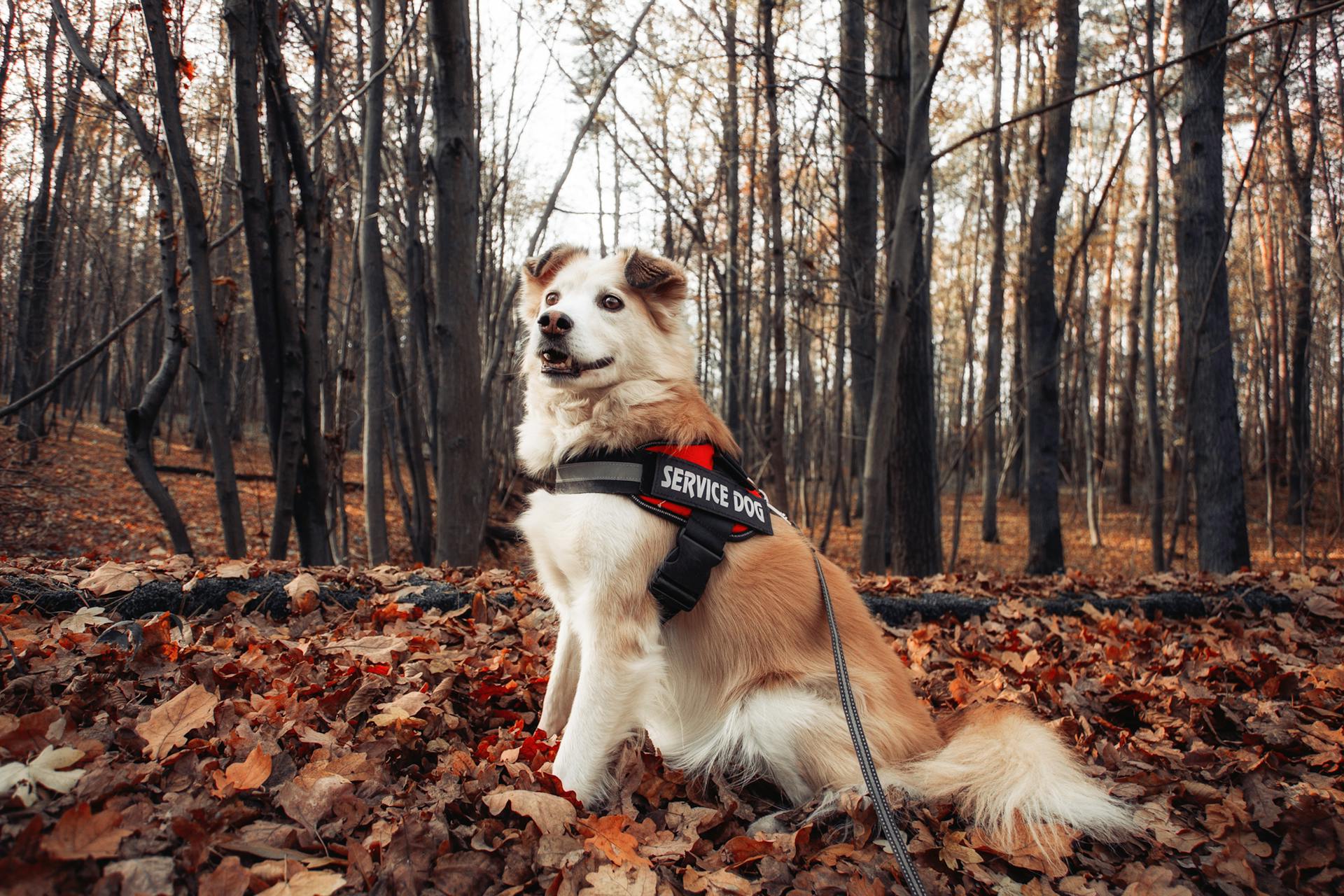
Service dogs are defined as dogs that are individually trained to perform specific tasks for individuals with disabilities. They're not just any ordinary dog, but a highly trained companion that assists people with various needs.
In Alaska, service dogs are allowed in all public places, such as restaurants, hotels, schools, and public transportation. This means you'll see service dogs accompanying their handlers in many different settings.
A service dog is trained to perform work or tasks for individuals with disabilities, including physical, sensory, psychiatric, intellectual, or other mental disabilities. This training is tailored to the specific needs of the handler.
Only dogs trained to perform specific tasks related to the handler's disability are considered service dogs under the ADA. This is an important distinction to make, as it ensures that only dogs that are truly assisting their handlers are given the same rights and privileges.
Service dogs must be well-behaved and under the control of their handlers at all times. This is a crucial aspect of being a service dog, as it allows the dog to perform its tasks effectively and safely.
Related reading: Public Access Test for Service Dogs
Emotional Support Animals

Emotional Support Animals in Alaska are recognized as assistance animals, but they don't have the same access rights as service dogs. Individuals with disabilities who don't meet certain thresholds or have dogs that aren't trained to perform specific tasks may be eligible to register their dog as an ESA.
Having a registered ESA can come with benefits like traveling with your animal without extra fees or living in pet-restricted housing.
In Alaska, emotional support animals are not trained to perform specific tasks, unlike service dogs.
Take a look at this: Are Service Animals Only Dogs
Qualifying for a Service Dog
To qualify for a service dog, you'll need to identify the type of assistance you require. Any dog breed can be a service dog, but certain breeds have characteristics and instincts that make them better suited for specific tasks.
Some examples of disabilities that service dogs can assist with in Alaska include blindness or visual impairment, deafness or hearing impairment, physical mobility impairments, seizure disorders, diabetes, autism, and anxiety and depression.
If you're unsure about the type of assistance you require, consider taking a support dog certification quiz to gain a better understanding of your needs.
Do I Qualify?
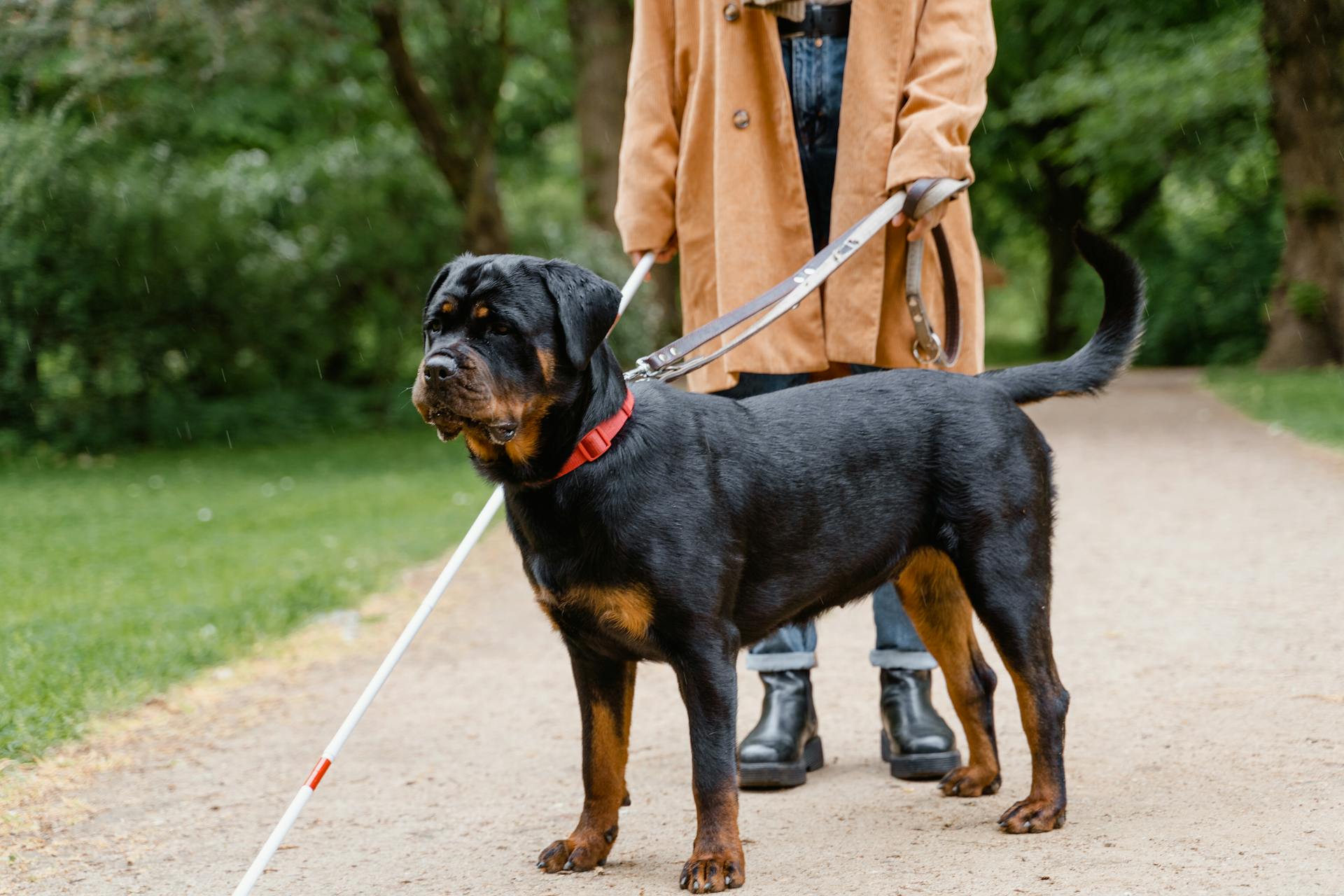
To determine if you qualify for a service dog, take the support dog certification quiz to gain a better understanding of the type of assistance you require.
The quiz can help you identify the potential benefits of having a service dog registration or an emotional support animal registration.
You'll need to assess your needs and circumstances to see if a service dog is right for you.
Service dogs are trained to assist individuals with disabilities, so you'll need to consider if you have a disability that would benefit from a service dog.
The support dog certification quiz will help you understand the type of assistance you require and whether a service dog is the right fit for you.
It's a great starting point to explore your options and make an informed decision about getting a service dog.
A fresh viewpoint: Do Service Dogs Have to Be Registered
Identify Disability Benefits
Service dogs can assist individuals with a range of disabilities, including blindness or visual impairment, deafness or hearing impairment, physical mobility impairments, seizure disorders, diabetes, autism, and anxiety and depression.

Blindness or visual impairment is a common disability that service dogs can help with, providing assistance with navigation and daily tasks.
Deafness or hearing impairment can also be a good fit for service dogs, which can alert their handlers to important sounds like doorbells or smoke alarms.
Physical mobility impairments, such as paralysis or arthritis, can be helped by service dogs that can provide balance support and assistance with walking.
Seizure disorders, diabetes, autism, and anxiety and depression are other conditions that service dogs can assist with, providing emotional support and stability.
If you're considering getting a service dog, it's essential to identify the specific disability benefits you need.
Consider reading: Service Dogs vs Emotional Support Dogs
Service Dog Training and Registration
In Alaska, you'll want to focus on proper training for your service dog. Ensure the dog is well-trained to perform tasks that assist with your disability.
To get started, identify the right service dog for your needs. This means considering factors like the dog's temperament, size, and breed to ensure it's a good fit for your lifestyle.
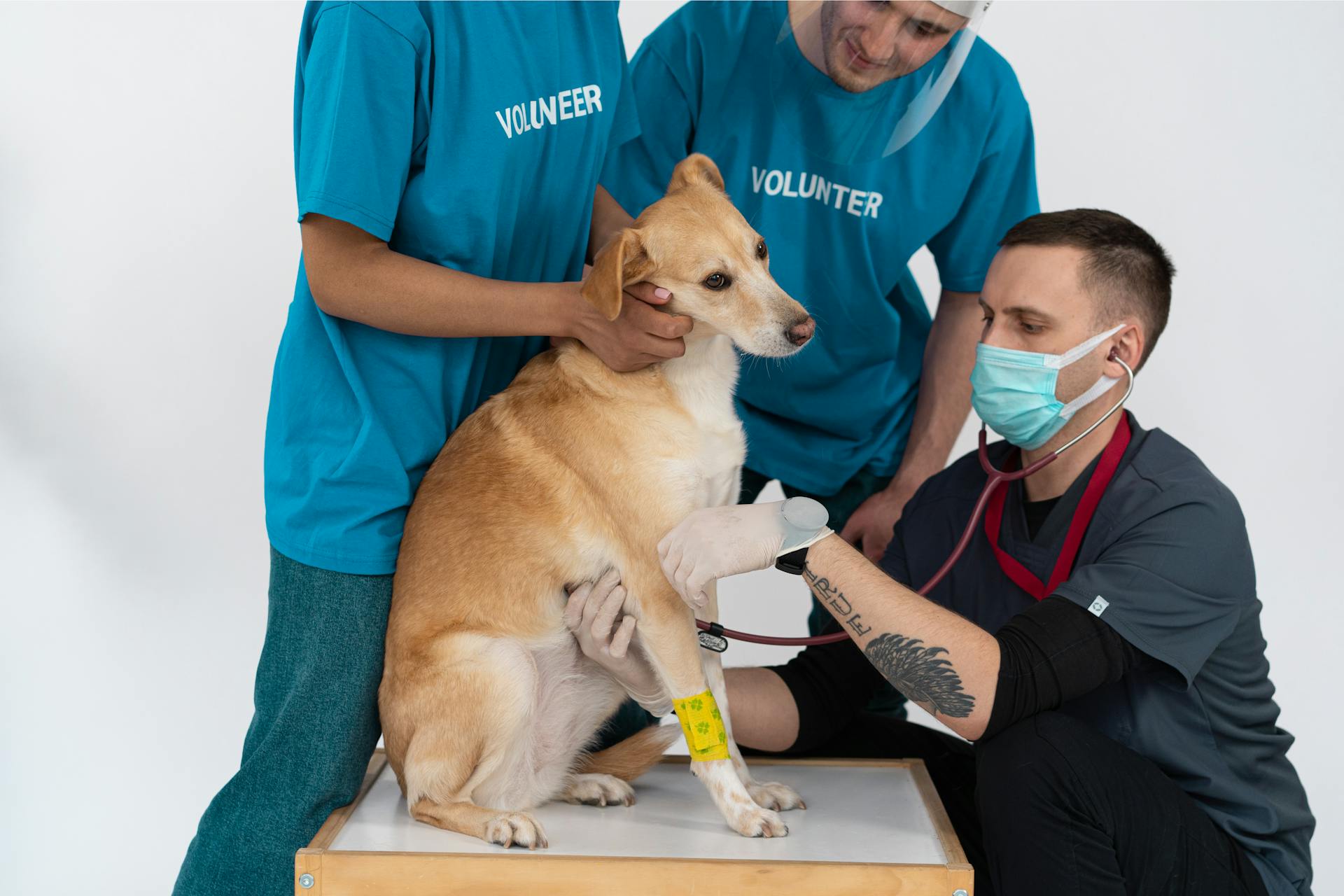
You'll also want to consider optional registration for your service dog. Although Alaska doesn't have mandatory registration requirements, having some form of identification, like a digital ID card, can help avoid disputes with third parties.
Here are the essential steps to follow for service dog training and registration in Alaska:
- Identify the right service dog for your disability
- Ensure proper training
- Consider optional registration
How to Register
In Alaska, you don't need to register your service dog, but having some form of identification is a good idea.
Having a digital ID card can help avoid disputes with third parties about your service dog's registration.
If you're considering registering your service dog, here are the steps to follow:
- Identify the right service dog for your disability
- Ensure proper training
Note that Alaska doesn't have any mandatory registration requirements, so these steps are optional.
Other Trainers Exist
Other trainers exist in Alaska, but that doesn't necessarily mean they're qualified to train a service dog for you. Anyone can call themselves a service dog trainer, but that's not enough.
In fact, there is no national certification for service dog trainers. Just because someone is a good dog trainer or has trained their own service dog doesn't mean they can train a service dog for you.
Michele Forto and her team have been training service dogs for over 20 years, which is a significant amount of experience.
Expand your knowledge: How Long Does It Take to Train Service Dogs
Cost of a Service Dog

The cost of a service dog can be a significant investment, but it's essential to understand the expenses involved.
The initial purchase of a puppy can range from $1000 to $3000, and a down payment of $2000 secures your spot in the program.
To train a service dog, it takes approximately two years and costs around $1500 per semester, with a minimum of six semesters required.
You'll also need to factor in the monthly cost of caring for the dog, which can range from $100 to $200 per month, depending on the dog's needs.
Annual veterinary care can cost between $500 and $1000, and you'll also need to budget for annual gear expenses, which can range from $100 to $200.
Here's a breakdown of the estimated costs:
- Program Paid in Full: $9500
- Payment per Semester (Minimum Six Semesters): $1500
- Approx. Monthly Cost to Care for Service: $100
- Approx. Annual Cost for Veterinary Care: $500-1000
- Approx. Annual Cost for Gear: $100-200
Living with a Service Dog
Living with a service dog in Alaska requires some knowledge of the law. Alaskalaw requires that reasonable accommodations be made for individuals with service dogs in any place where “the general public is invited”.
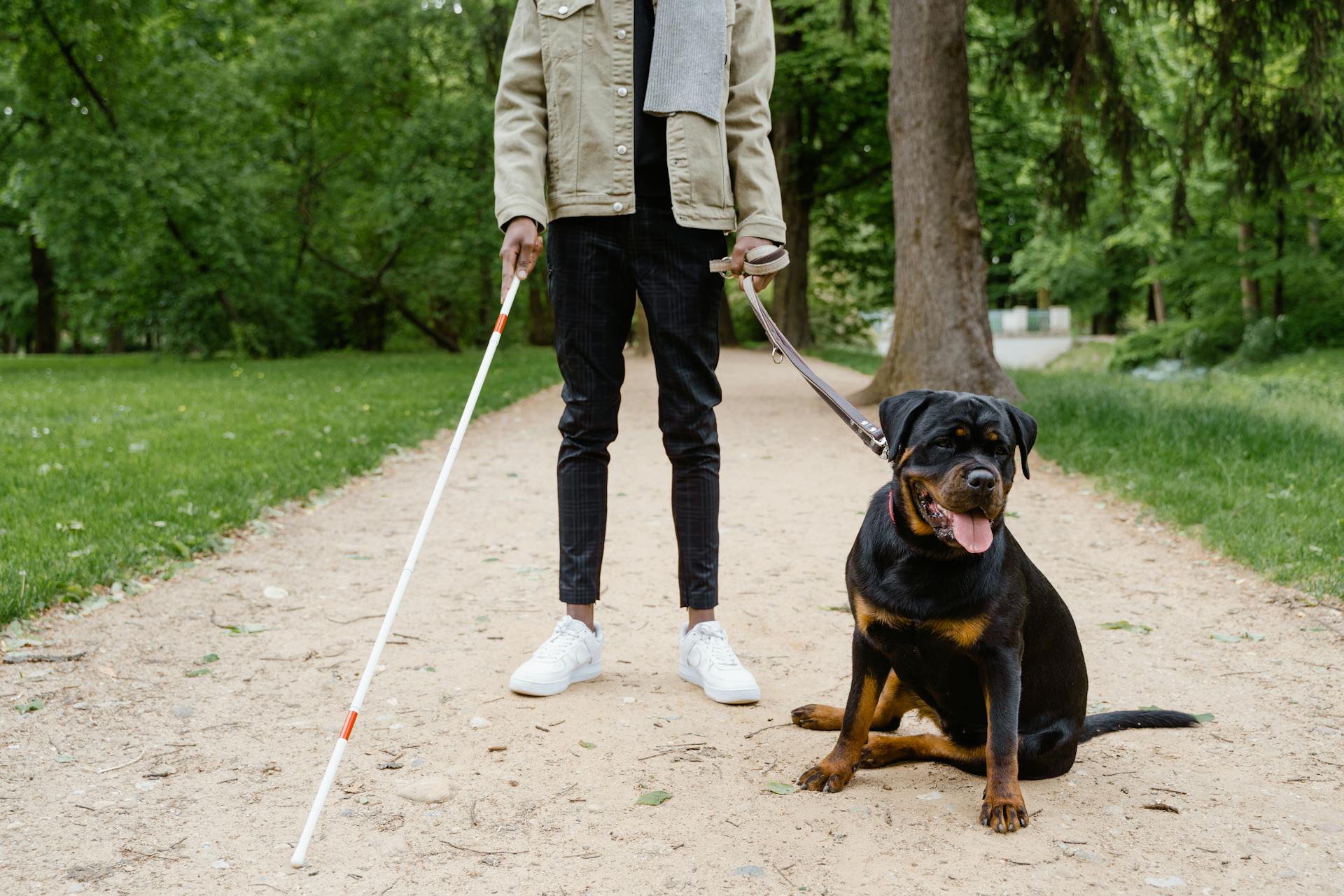
In Alaska, you can bring your service dog with you in all public places, such as restaurants, hotels, schools, and public transportation. This is a huge advantage for service dog handlers who need their dogs by their side.
Carrying a digital ID card is a must for service dog handlers in Alaska. It helps prove that your dog is a trained service animal, not just a pet.
Some service dog handlers also choose to use physical markers such as collars, bandanas, and ID tags to identify their service dogs. These markers can help prevent confusion or discomfort when interacting with staff at public establishments.
Expand your knowledge: Do Service Dogs Have Id Cards
Frequently Asked Questions
How to make your dog a service dog in Alaska?
To make your dog a service dog in Alaska, it must perform a task directly related to your disability without needing professional training or special documentation. Your dog will be considered a service animal under Alaska law, but it's essential to understand the specific requirements and responsibilities involved.
Do service dogs fly free on Alaska Airlines?
Yes, service animals travel for free on Alaska Airlines. However, space for pets and emotional support animals may be subject to availability.
Sources
- https://alaskadogworks.com/service-dog-training-in-alaska/
- https://servicedogcertificates.org/service-dog-in-alaska/
- https://usaservicedogregistration.com/statelaws/alaska-service-dog-laws/
- https://catalog.uaa.alaska.edu/handbook/student-freedoms-rights-and-responsibilities/service-animals-assistance-animals-and-pets/
- https://www.guidestar.org/profile/82-0873216
Featured Images: pexels.com

